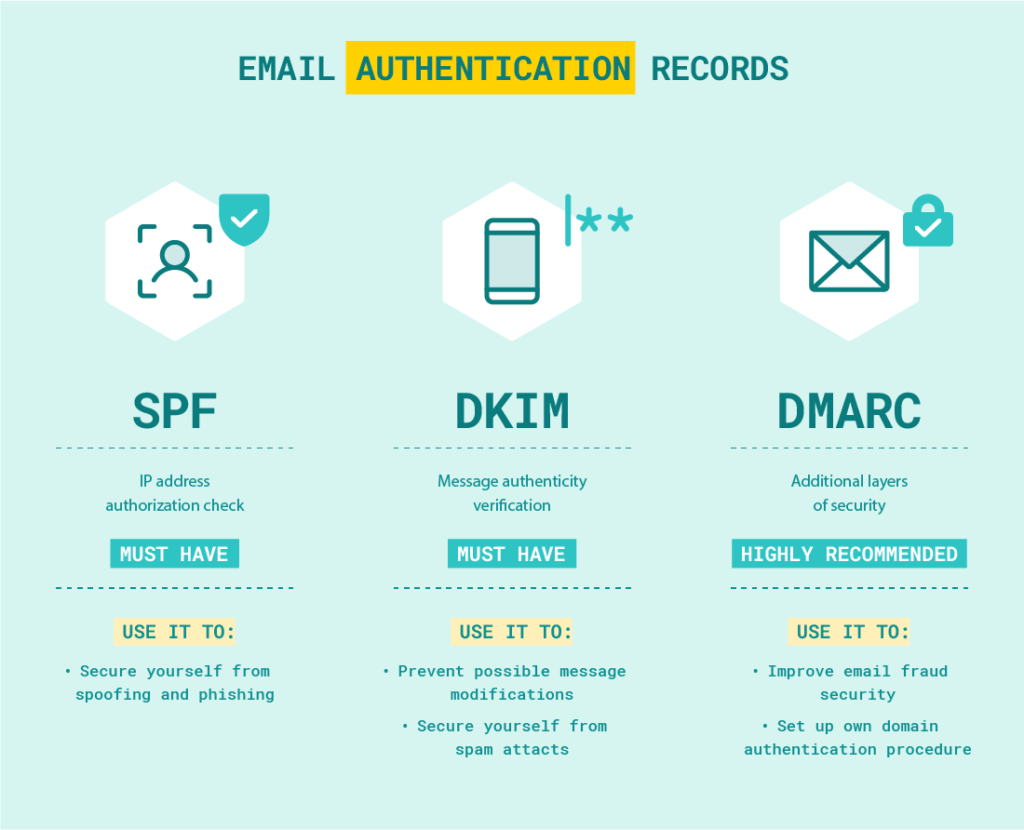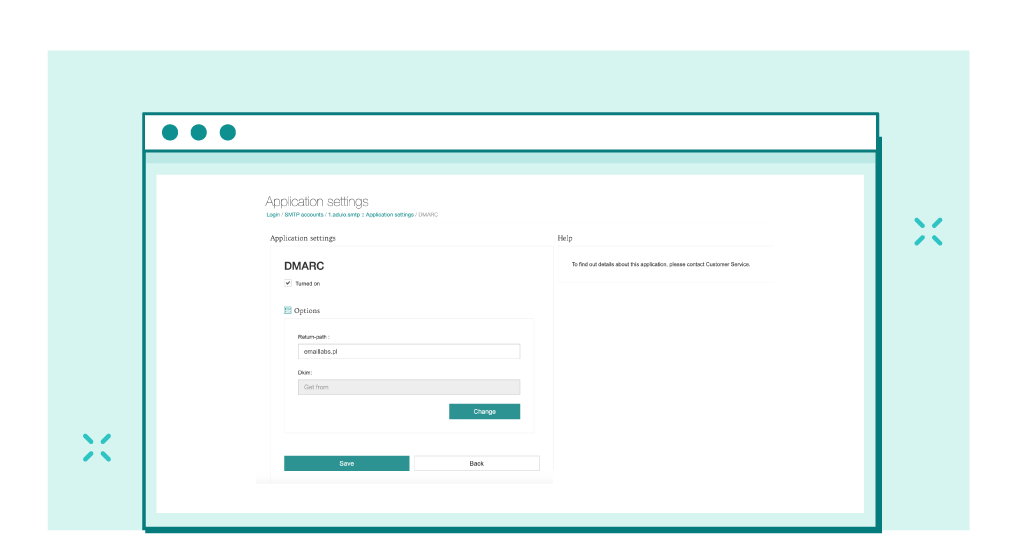Although the term “return path” might seem self-explanatory, many companies aren’t familiar with the process it denotes.
Simply put, the return path is a hidden header that indicates where the system should send bounced messages. It also identifies where the email actually came from.
Also called the reverse path, envelope from, envelope sender, MAIL FROM, and bounce address, the return path address ensures you can collect and process bounces from your emails appropriately. It is a crucial component of tracking the success of your email campaigns and improving deliverability.
The most significant advantage of using this solution is convenience. With all bounced emails kept together and organized, you will have a much easier time completing your tasks and ensuring everything runs smoothly.
Let’s examine why online businesses should use a custom return path address for their messages and how you can take advantage of it in greater detail.
The return path is an SMTP address that is separate from your original sender address. While the latter is visible to other parties, generating familiarity between your company and the recipients, the former is typically invisible.
The primary purpose of the custom return address is to prevent bounce receipts from crowding your original sending inbox. It works in the background by interacting with email servers.
Let us explain.
Suppose you want to run a new email campaign. In that case, you will likely send out many emails. You may even plan to send messages to your entire email list.
Unfortunately, some of those messages will bounce back due to various reasons.
Without the return path header in place, either your company’s inbox will be flooded with “failed delivery” messages, or the email server will be confused, and you’ll never know about the existence of the bounce.
Either way, this situation can negatively affect your sending reputation.
An established return path solves this issue. During the validation process, it works in tandem with the DMARC, which checks, among others, if the domain in your “From” address matches the Return-Path (SPF alignment test).
If it does, the system validates your identity as a sender. As a result, your message has a higher chance of getting through filters set by inbox providers and reaching its destination.
And if your message gets bounced, it lands in your bounce address.
Maximize your email deliverability and security with EmailLabs!
At EmailLabs, we automatically create a return path for all our clients. This way, we are able to collect all bounced messages and present their statuses in our analytical panel. Those addresses that have a hard bounce, for example, go on our internal blacklist so that we do not re-send to them, protecting the sender’s reputation.

This is how the hardbounces report looks in the EmailLabs dashboard.
However, you’re free to customize your return path, starting with the PRO plan.
A clear, systematic return path is vital for sending consistent signals that servers can use to establish authenticity.
DMARC stands for Domain-Based Message Authentication, Reporting, and Conformance.
It is an email validation system created to detect and prevent phishing. In this illegal activity, cyber-criminals pose as legitimate companies to lure individuals into providing them with sensitive data.
DMARC controls what happens if a message fails SPF and DKIM authentication checks and provides reports containing lots of valuable information.
Setting up a custom return path that leads to a subdomain on your main domain can help you pass the DMARC validation process (domain alignment). Ultimately, it is a straightforward method to improve your email deliverability.
Besides comparing your sender and return path names, DMARC looks at a host of other factors before deciding to allow or reject your email.
SPF is a “path-based” authentication system that protects domains from spoofing. It stands for Sender Policy Framework.
Basically, SPF allows you to specify which email servers are permitted to send messages on behalf of your domain. The mail server compares approved IP addresses to the IP address that sent the message. If the sender’s IP is among the approved IP, the email passes SPF authentication. If it fails, the message is treated as spam.
Using this system is crucial to prevent your emails from being marked as spam by receiving servers.
Usually, the best way to achieve SPF alignment is by using a custom return path address in the email header.
DKIM (Domain Keys Identified Mail) is yet another authentication method to protect you and your customers from spoofing and phishing.
How does it work? Sending server signs the email using a private key. The receiving server verifies whether messages are authentic by using the public key (DKIM entry placed in DNS).
If the DKIM validation passes, the receiving server can be confident the message was sent by the address in the Return Path and wasn’t altered in transit.

SPF, DKIM, DMARC: Basic elements of email authentication
More often than not, dealing with bounced messages is a headache. Even if you run a small company, the number of emails in your inbox can quickly pile up.
Using a customized return path header can help you with that problem. Plus, it is vital for email authentication processes.
As outlined above, it allows the recipient’s server to determine whether the email comes from a verified source. It is crucial for DKIM, DMARC, and SPF alignment. Without it, your messages can get rejected, damaging your email deliverability and sender score.
Additionally, the return path keeps your original sending inbox free from unnecessary clutter. Thanks to it, you can focus on what matters most and attend to email errors whenever it suits you.
Maximize your email deliverability and security with EmailLabs!
When you send emails from your webmail (e.g. Google, Hotmail, Yahoo), the Return Path is normally set to send bounces back to your personal email address. Email Service Provider (e.g., EmailLabs) on the other hand, automatically adds the return path header for their customers. This way, they can detect problems regarding delivering the messages and resolve some of them.
That being said, you can contact your ESP to create a custom return path for your messages. Doing so can help you send consistent signals in your emails, significantly boosting your deliverability.
Cleaning up your email header and customizing your return path is crucial to maintaining a high sending reputation and ensuring your emails will pass the validations performed by mailbox providers.
The most straightforward method to set up a custom return path is to contact your email provider and ask if they support setting a custom Return Path as the setup instructions will vary between different providers.
Contact us to learn how we can help you!
Alternatively, you can do most of the heavy lifting yourself.

You can set your own Return Path using the EmailLabs admin panel or with help from our experts.
Setting up a custom Return Path in EmailLabs is quick and easy to implement using one of the two following methods:
1. Return Path in the DMARC application
The chosen domain that matches from address must be entered in the EmailLabs panel (SMTP Accounts > Settings > DMARC: Turned on).
Please note that up to 2% of the bounced messages may be directed to your domain. These bounces are returned by the receiving servers to the domain set in the Return Path field. The remaining 98% of the bounces are passed to EmailLabs in an SMTP session during the server_smtp – server_smtp communication. This means that some of the information regarding undelivered messages may come to your domain directly.
This method is not recommended for senders using multiple sending domains.
2. Disabling Return Path overwriting by EmailLabs.
Create a subdomain from your sending domain, such as bounce.mydomain.com. It is important that no current mail is handled on such a subdomain. Then it will be possible to set up our MX records, which will enable us to collect 100% of bounces from receiving servers and present the data in the Emaillabs panel.
Publish both MX records to the DNS server of the custom Return Path domain, for example:
Domain: bounce.mydomain.com
Entry type: MX
Value: bounce01.emaillabs.net.pl
and
Domain: bounce.mydomain.com
Entry type: MX
Value: bounce02.emaillabs.net.pl
Then please contact our Support Team to disable Return Path overwriting.
Both methods are available starting with PRO Plan.
Gmail has announced significant changes in the requirements for email senders to maintain a good reputation and proper classification of messages in user inboxes starting from February 1, 2024....
Vercom S.A. public joint-stock company to which the EmailLabs project belongs, has been assessed and certified to be compliant with the ISO/IEC 27001 and ISO/IEC 27018 standards. The Vercoms’...
The increasing number of phishing attacks each year, and the projection that this trend will continue to escalate, aren’t likely to astonish anyone. This can be attributed, in part,...
Out of all the things that can go wrong when sending out marketing emails, having your emails end up in the recipient’s spam folder is arguably the most dreaded...
Email Authentication, Security
DMARC is an email authentication protocol that is designed to give domain owners the ability to protect their domain from unauthorized use, commonly known as email spoofing. Spoofing occurs...
With the emergence of the Covid-19 pandemic, many brands have been challenged to adapt in a short period to the changed reality and new consumer attitudes. That meant reorganizing...
Have you ever sent an email in haste and immediately wished you hadn’t? It happens more often than we’d like to admit. If you ever find yourself in this...
One safe and easy way to keep track of your digital interactions is to save emails as PDFs. However, do you know the best ways to easily turn your emails into PDF files? In this article, we’ll look into the different ways you can do to turn your emails into accessible PDF files. Let’s start! Key Takeaways To save emails...
Sending large files online can sometimes feel like maneuvering through a maze with unexpected twists and turns. The frustration of hitting attachment size limits or dealing with slow uploads...
Have you ever sent an email in haste and immediately wished you hadn’t? It happens more often than we’d like to admit. If you ever find yourself in this...
One safe and easy way to keep track of your digital interactions is to save emails as PDFs. However, do you know the best ways to easily turn your emails into PDF files? In this article, we’ll look into the different ways you can do to turn your emails into accessible PDF files. Let’s start! Key Takeaways To save emails...
Sending large files online can sometimes feel like maneuvering through a maze with unexpected twists and turns. The frustration of hitting attachment size limits or dealing with slow uploads...
Are you a bit baffled by email protocols like IMAP, POP3, and SMTP? Have no fear – this article is here to explain it all. If you have ever...
In 2024, global providers like Gmail and Yahoo have implemented a series of changes, primarily targeting bulk senders. These changes, already in effect, are part of a continuous update...
In the face of dynamic technological advancements and increasingly sophisticated cyber threats, ensuring network security has become crucial. Dozen security incidents present a challenge that we cannot afford to...
Google and Yahoo's Requirements
2024 marks a turning point in the fast-paced world of email deliverability, as this is the year when Google and Yahoo updated their sender requirements. With the enforcement period...
Best practices, Email Marketing
B2B email marketing – it’s a term you’ve likely heard before, but what does it really entail? And, more importantly, how can it be done effectively? In this article,...
Deliverability, Sending Reputation
Email sender reputation is one of the most important factors that can determine whether your emails reach the intended recipient or not. So, what is the email sender reputation,...